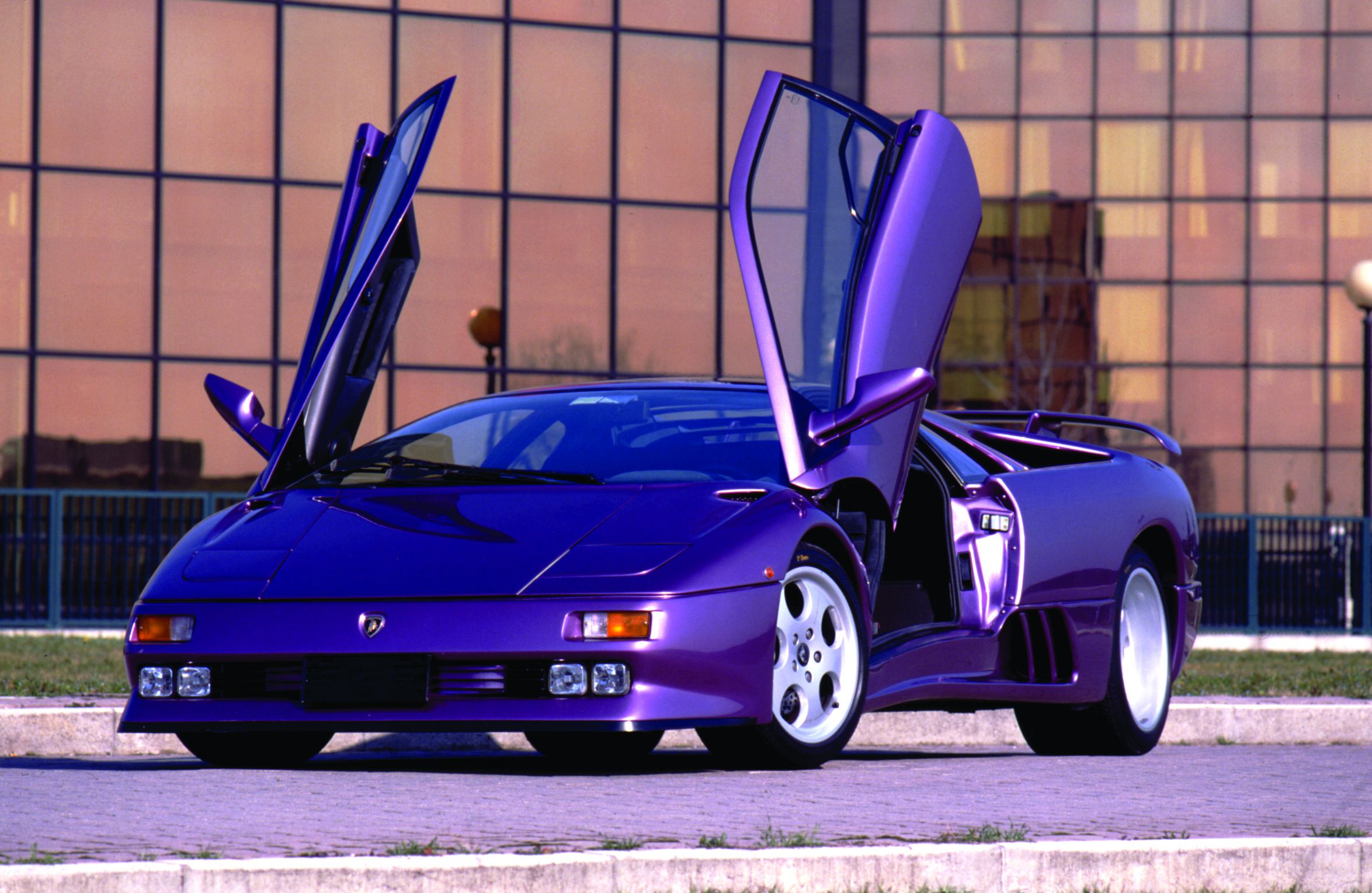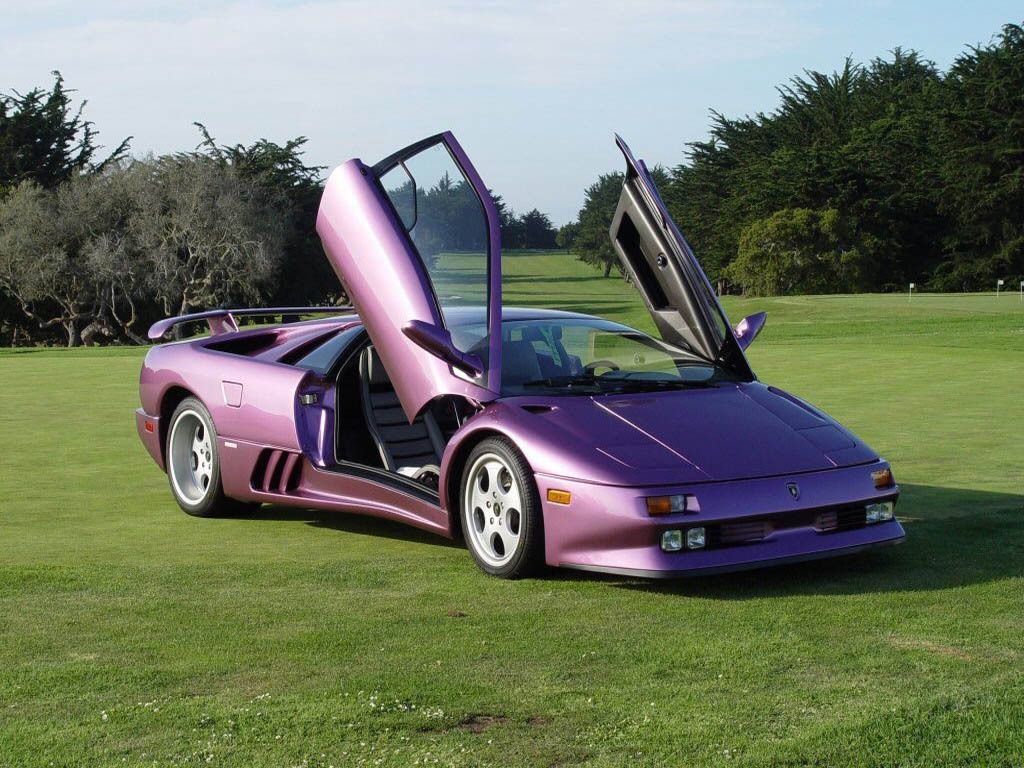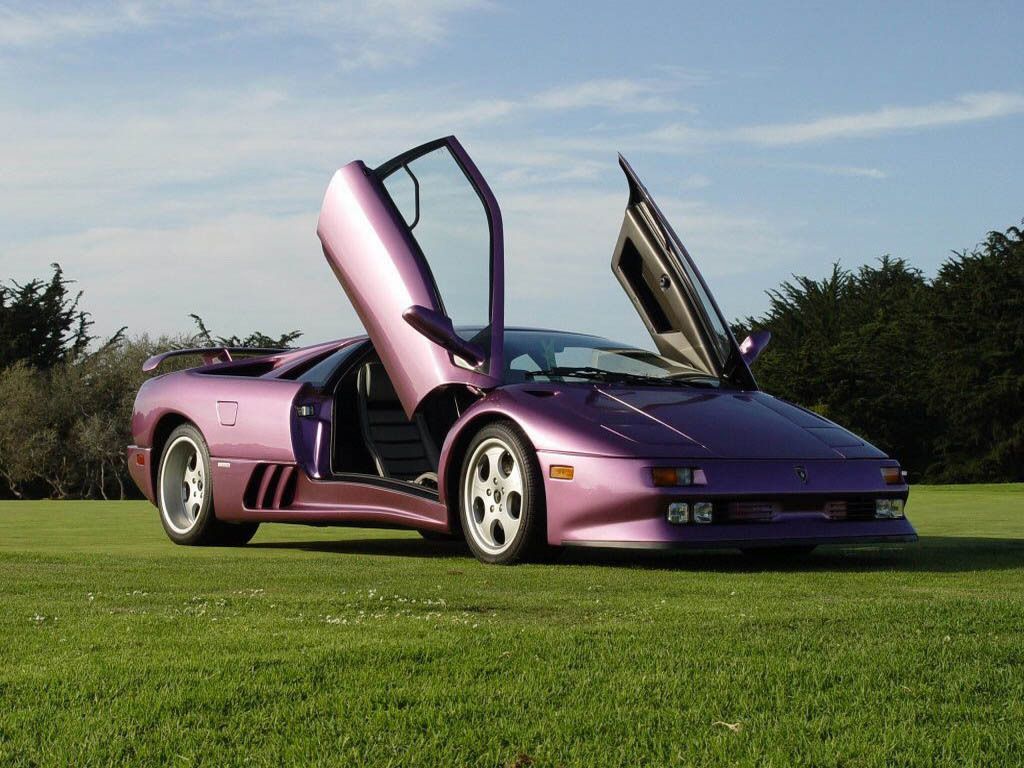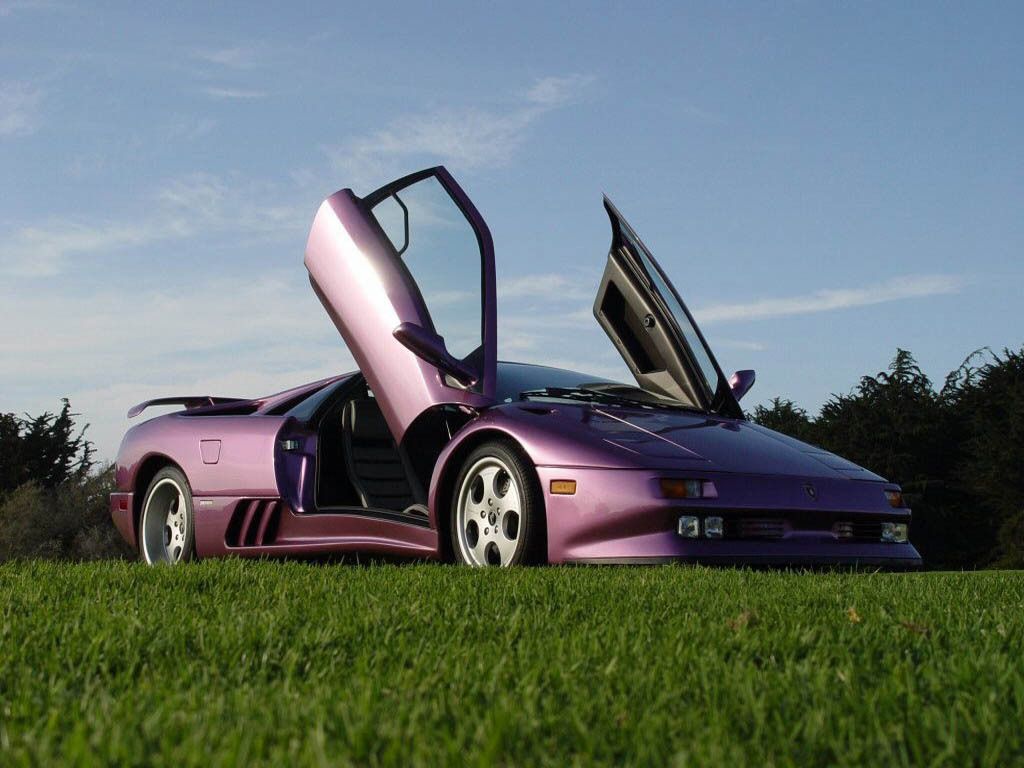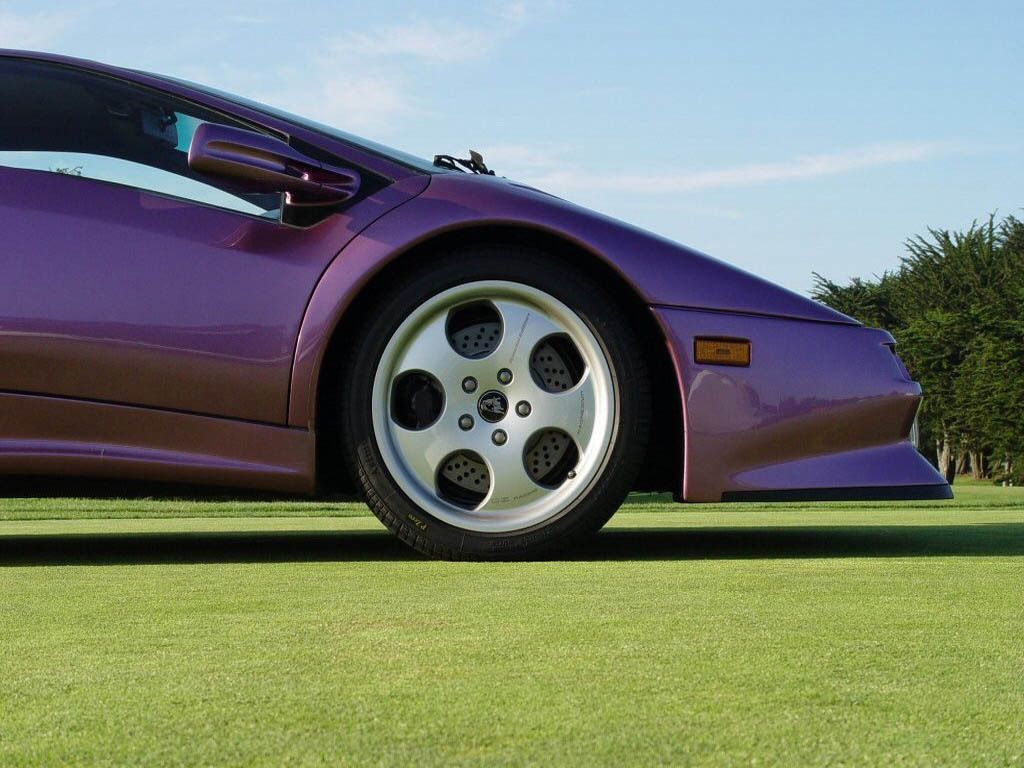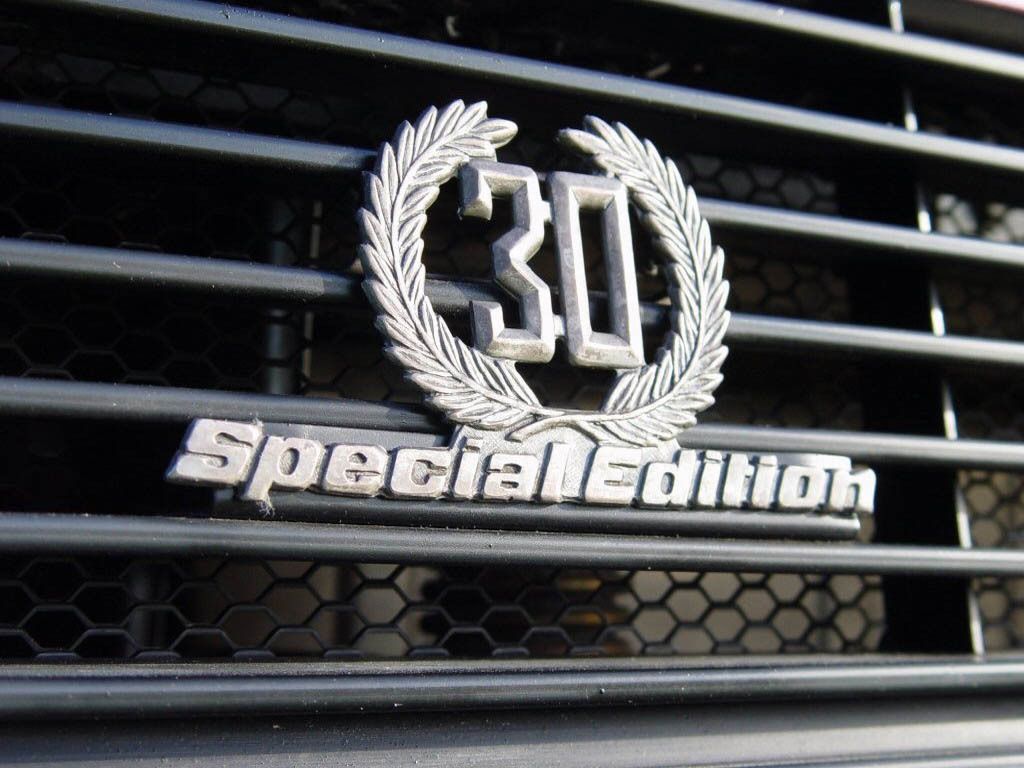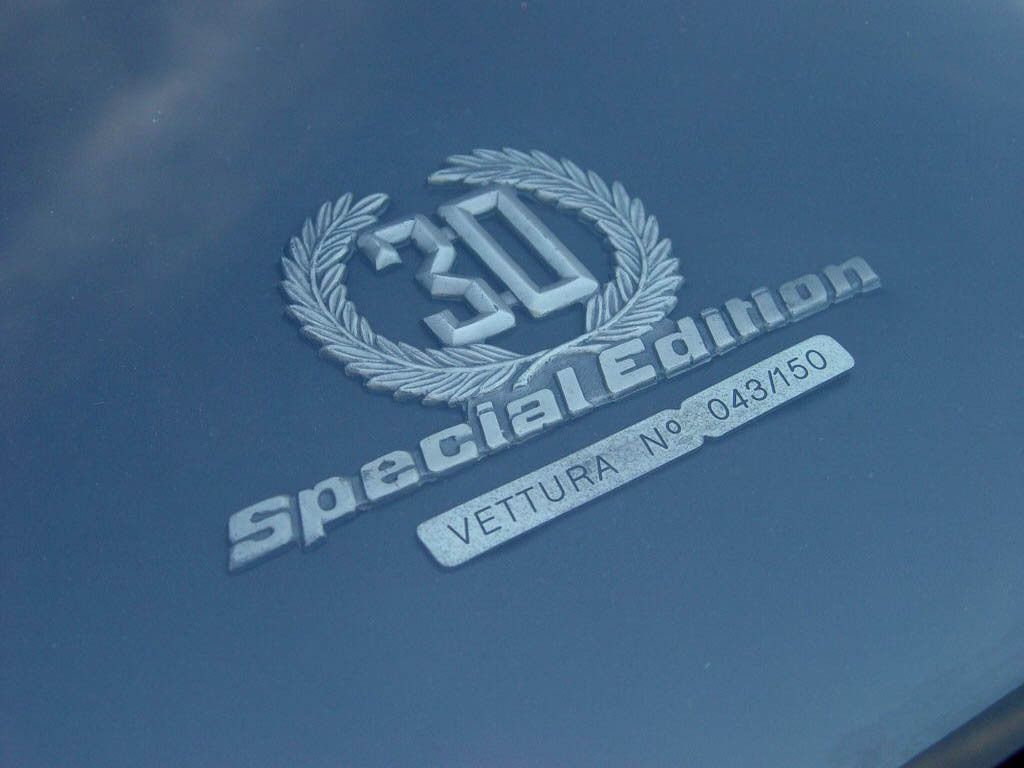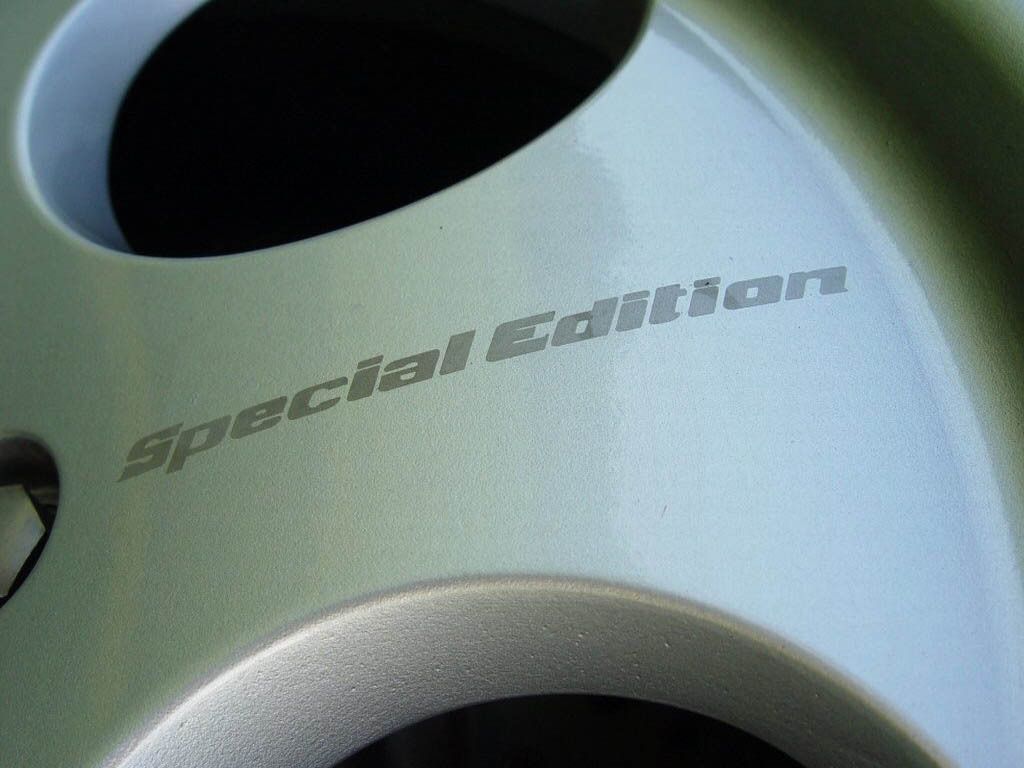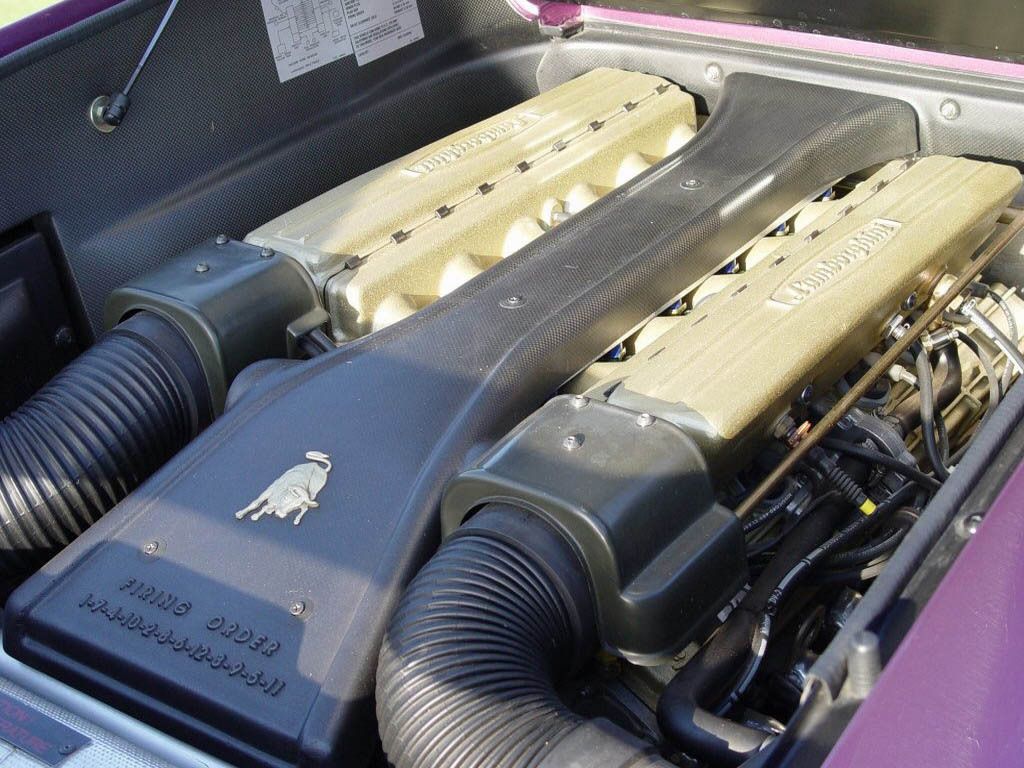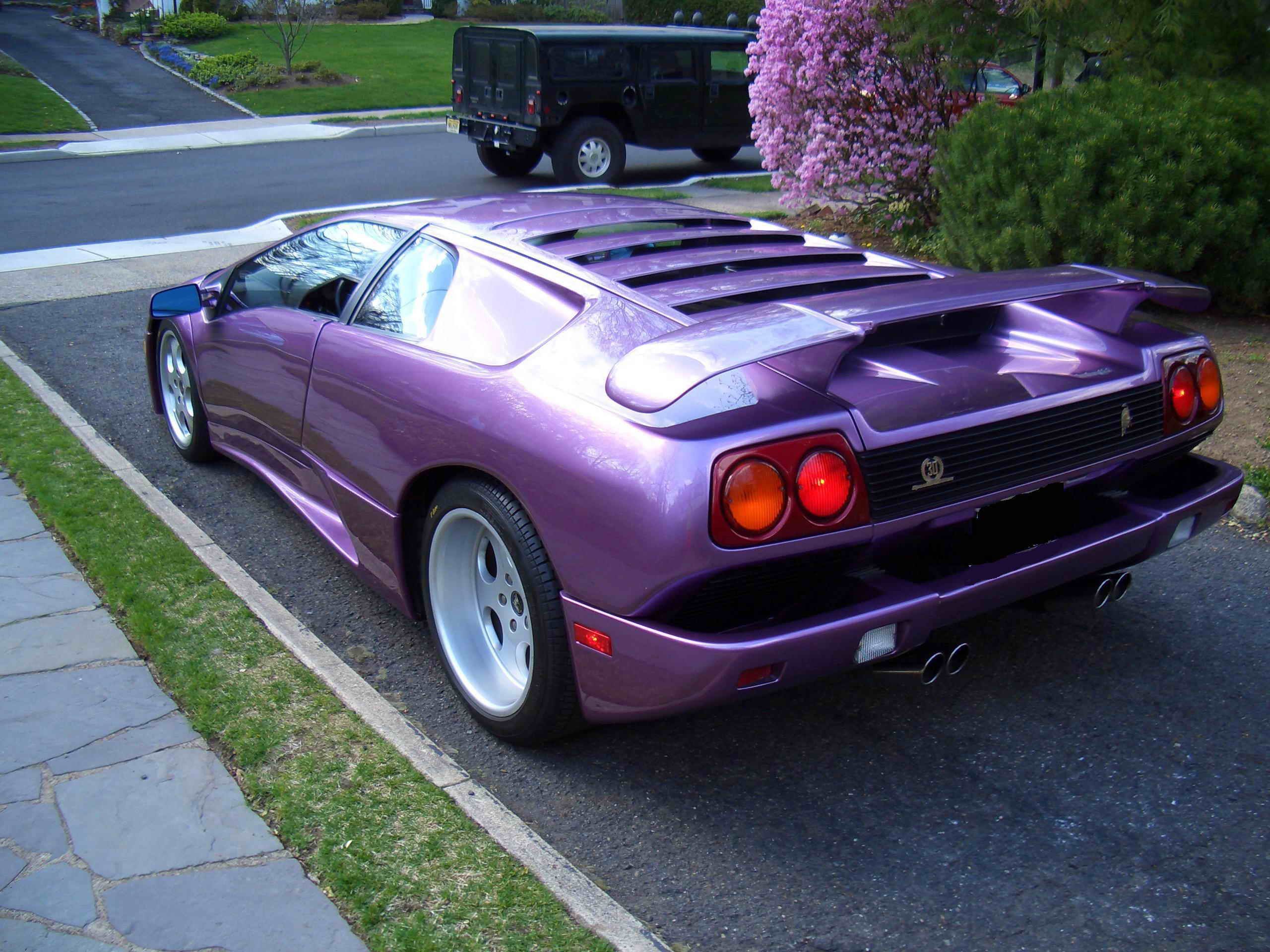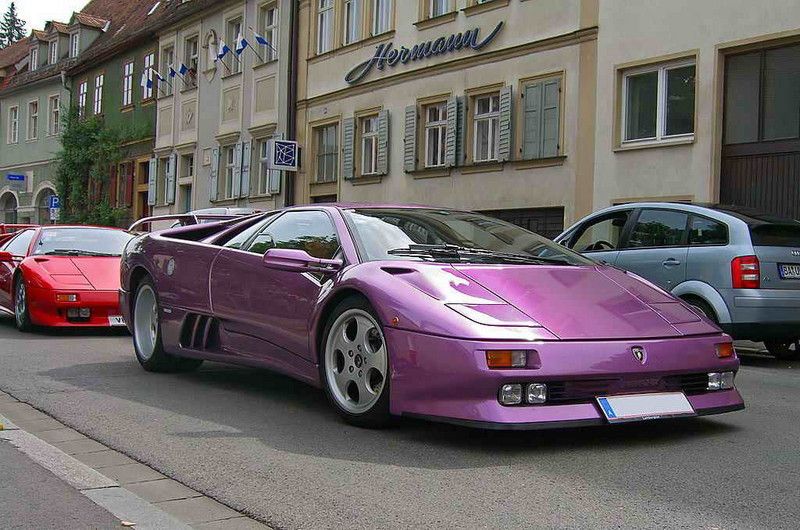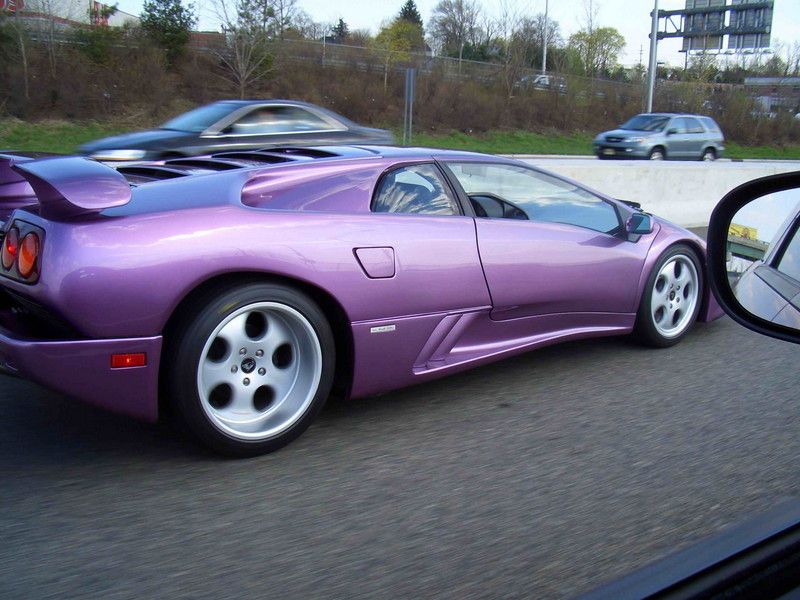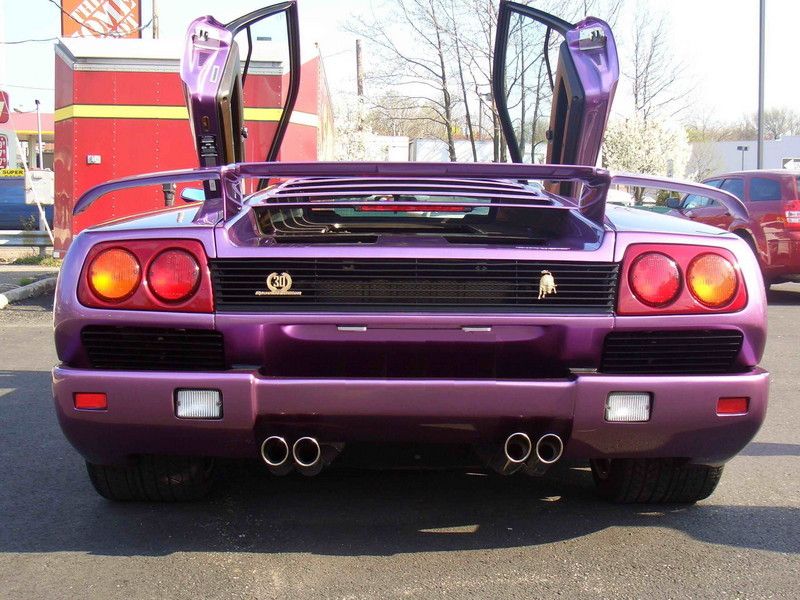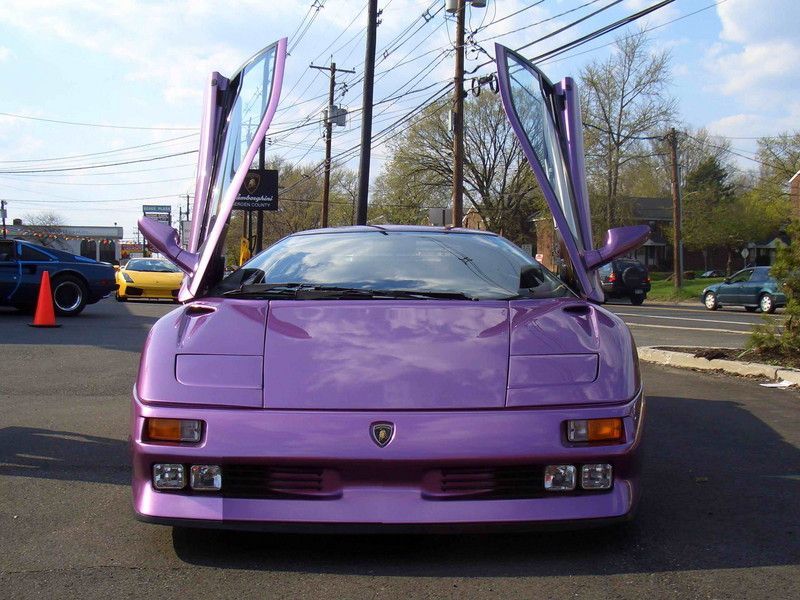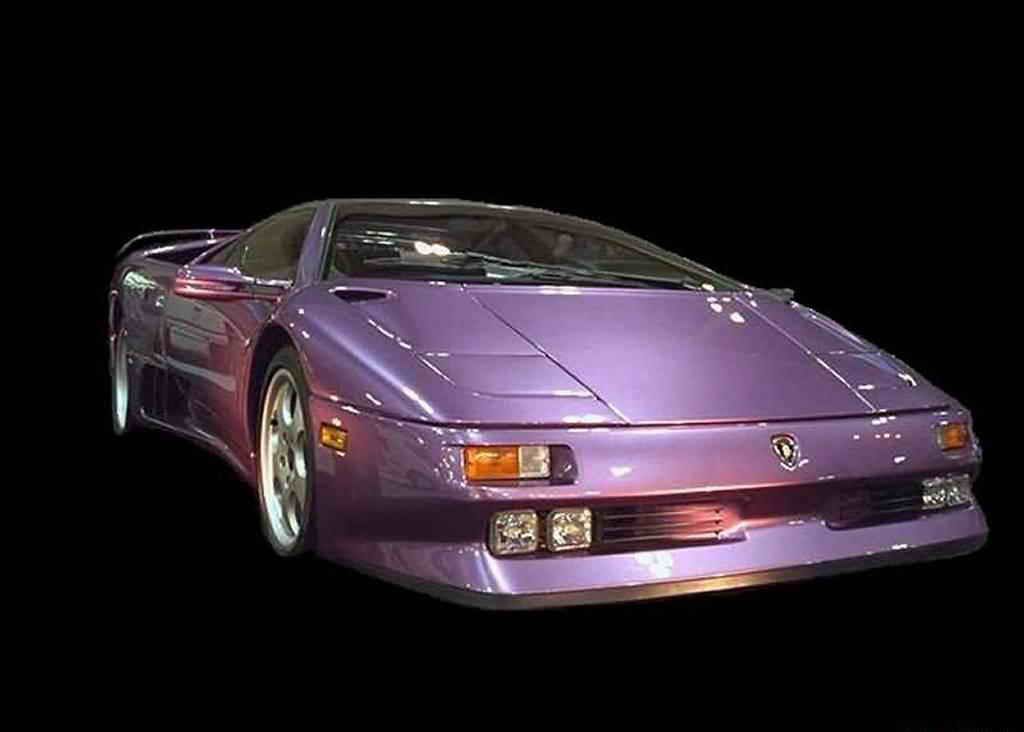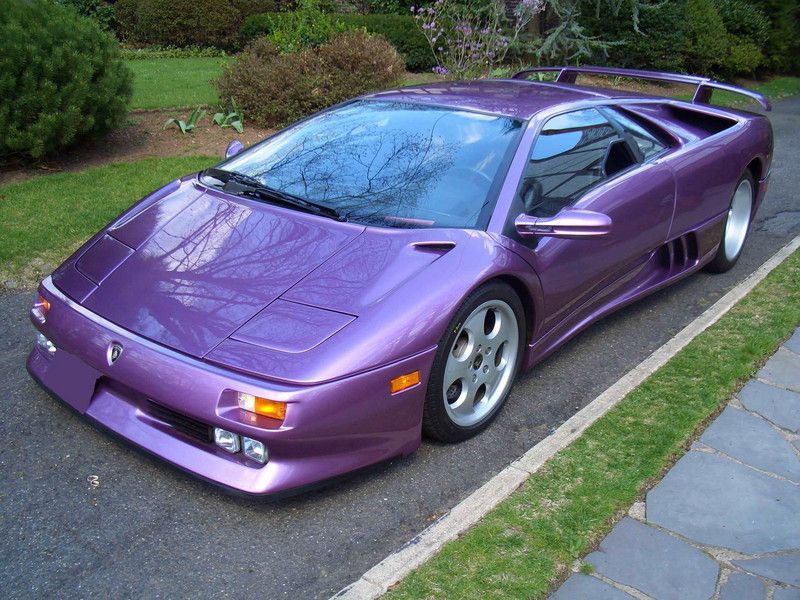The Lamborghini Diablo SE 30, where SE stands for Special Edition, was built between 1993 and 1995 to celebrate the 30th anniversary since the Lamborghini company was founded by Ferruccio Lamborghini. Only 150 of these special Diablos were built and less than 30 received the coveted Jota package.
Lamborghini's only supercar built during the Chrysler ownership years was the Diablo, a model that was conceived to be better in all areas than the Countach which had originally been presented all the way back in 1974. The Diablo featured a rounder design although it was still a wedge shape car in spirit with the same scissor doors that powered the Countach to every child's bedroom wall in the '70s and '80s.
As mighty as the Diablo was, Lamborghini turned the dial to 11 with the SE 30. Designed as an even more purposeful version, it was over 250 pounds lighter than the standard model and hid almost 40 extra ponies under the engine lid. But Lamborghini's desire to go GT racing in the then-sprawling BPR GT Endurance Series saw them build a number of Jota kits designed to be added to the SE 30. The original purpose of the Jota trans-kit was to transform the Diablo into a turn-key race car, but the majority of the 28 kits built ended up on street-legal cars after all.
1993 Lamborghini Diablo SE 30
- Make: Array
- Model: 1993 Lamborghini Diablo SE 30
- Horsepower: 525 @ 7000
- Torque: 5200
- [do not use] Vehicle Model: Array
Lamborghini Diablo SE 30 Exterior
The successor to the flamboyant Countach, in itself named after an Italian slang word that describes unbridled amazement, arrived in January of 1990 after a five-year gestation. It was christened 'Diablo' after a devil-may-care bull who fought with 'El Chicorro' in 1869, a battle for the ages as many in attendance would recount.
The Diablo's development started when the company was owned by French brothers Jean Claude and Patrick Mimran. They drafted in Marcello Gandini, the man behind the Miura and the Countach while he was affiliated with Bertone, to design the new car, but a change of ownership saw Gandini's ideas scrapped. The Italian's razor-sharp concept, a direct successor to the Countach 'Periscopio' in terms of looks, was seen as outdated by Chrysler who, instead, employed their own design team led by Tom Gale, the man behind the Chrysler Prowler and the Dodge Viper. Gale came up with a less abrasive version of Gandini's design which was accepted, leaving Gandini dismayed. The original design lived on, though, as it was slightly altered and ended up as the Cizeta V16T.
The Lamborghini Diablo SE 30 was presented in 1993 during the Lamborghini Days festival in Sant'Agata Bolognese where over 140 Lamborghinis gathered to celebrate three decades of decadence and success under the coat of arms of the Raging Bull.
The company had already built a special model to celebrate its enduring success, five years prior in 1989 when the company turned 25 years old. Back then, the Countach '25th Anniversary' model was presented and it was, in the same vein as the SE 30, a much improved Countach in most areas. However, while the '25th Anniversary' was more focused on the comfort of its occupants, the SE 30 was a beast meant to go break some lap records.
The pop-up headlight arrangement wasn't altered on the SE 30 although two triangular air vents were added on top of the fenders. The front lip ends with a rubber add-on meant to save you some scratches of the underbelly or the tip of the nose.
From the side, you'll notice the new wheels. They are 18-inch in diameter at the back and were built especially for this car by OZ-Racing while Pirelli P Zero tires were the final link to the road. They retain the circular theme of the VT wheels but the spokes are clearly outlined. The air intakes incorporated in the rocker panels come with vertical louvers like on the Diablo Roadster. Another defining detail of the SE 30 are the side windows. Akin to some racing cars, only the lower part separated from the rest of the window by a curved bar opens to breathe air into the cabin.
The enormous rear wing painted in the same color as the rest of the bodywork is permanently attached to the louvered hood. The lowest-mounted louver hosts the additional brake light. On the 25-odd Jota models, the rear hood also comes with two extra scoops designed to feed extra air into the engine compartment. Not much else is different between a standard SE 30 and an SE 30 Jota.
As with the Countach and the Miura, rear visibility is abysmal which is why, in the dreadful scenario that you have to back up in your Diablo, you most definitely have to open the scissor door, sit on the door sill and back up while looking out yourself. Yes, cars didn't always come fitted with rearview cameras that tell you how close you are to impending doom - read 'scratches in parking lots' - at any time.
Lamborghini Diablo SE 30 exterior dimensions
|
Wheelbase |
104.15 inches |
|---|---|
|
Length |
175.28 inches |
|
Width |
80.17 inches |
|
Height |
43.43 inches |
Lamborghini Diablo SE 30 Interior
Lamborghini wanted the SE 30 to be the car that would take its customers on a path towards motorsports. That's why the aim of saving weight was paramount. That's why carbon fiber was used extensively in the cabin. The seats were made out of carbon fiber as well as parts of the dash that was picked up from the VT.
Even the smaller, racing-oriented, steering wheel has Alcantara in the middle while the rim is wrapped in a grippier type of leather. While this is a car that currently trades hands for almost $500,000 the indicator stacks on the sides of the steering column are still the same as on a Morris Marina. But, at least, when you look behind the steering wheel at the two main gauges with their white background you see that the odometer exceeds 200 mph. In fact, the team of engineers assembled to create the Diablo was given the top priority of building a car that could exceed 196 mph.
The central air vents are placed in line with the gauge cluster housing but the few switches and buttons are positioned lower on the reclining center console. Lamborghini offered the SE 30 without air conditioning or a radio although customers could option these amenities back in if they didn't care about the added weight. The bucket seats come with four-point harnesses that can hold you in place even through the tightest of hairpins.
Lamborghini Diablo SE 30 Drivetrain
To save weight, Lamborghini returned to the RWD setup with the SE 30. but this also meant the car was more menacing and, with much of the weight hanging around the back half of the thing, keeping it pointing in the right direction proved tough in the wet.
The engine on the SE 30 was lighter since magnesium was used to make the intake manifolds More power was extricated from the naturally-aspirated unit thanks to the reprogramming of the Lamborghini LIE electronic injection, the addition of a free-flow exhaust system and fiddling with the cylinder heads. How much?
The electronically-adjustable suspension of the VT was no more on the SE 30 although, in its place, Lamborghini put a four-way traction control system. By four-way I mean it had three level of intrusiveness while the fourth level meant you got no help from the traction control system at all.
As I said, the suspension was more traditional on the SE 30 with parallelogram action unequal length wishbones, anti-roll bars, and front anti-dive and anti-squat geometry. Steering was by rack and pinion and was unassisted on this model, although the basic model came in standard with power steering.
The SE 30 tipped the scales at 3,200 pounds. With 530 horsepower pushing from behind, a top speed nearing 210 mph was attainable whilst the sprint from 0 to 62 mph took little over four seconds. The Jota upgrade kit pushed the bar even higher. On the Jota, a lighter crankshaft, new cams, and a reprogrammed ECU brought to light almost 60 more horsepower.
All the power from the DOHC, chain-driven, 48-valve engine reaches the back tires through a 5-speed all-synchromesh ZF gearbox with a limited-slip differential. The brakes are from Brembo with an H-type hydraulic circuit and servo-assistance.
Lamborghini Diablo SE 30 specifications
|
Engine |
Naturally-aspirated, DOHC, chain-driven, 48-valve, 5.7-liter, 60-degree V-12 with a light-alloy block with pressed-in liners |
|---|---|
|
Fuel feed |
L.I.E. Lamborghini electronic sequential multi-point injection |
|
Compression ratio |
10.0:1 |
|
Bore x Stroke |
3.42 x 3.15 inches |
|
Gearbox |
5-speed all-synchromesh manual ZF transmission with a hydraulically-operated single-plate clutch |
|
Suspension |
Independent front & rear with parallelogram action unequal length wishbones, anti-roll bars, with variable geometry |
|
Brakes |
Brembo ventilated disc brakes with an H-type hydraulic circuit and servo-assistance |
|
Weight |
3,200 pounds |
|
Output |
530 horsepower at 7,000 rpm |
|
Torque |
428 pound-feet of torque at 5,200 rpm |
|
0-62 mph |
4,5 seconds |
|
Top speed |
207 mph |
Lamborghini Diablo SE 30 Pricing
Lamborghini only ever built 150 SE 30s, each marked as such by a numbered plaque that tells you which car you're in. Standard SE 30s sell for anywhere between $130,000 and $220,000 although a Jota version is substantially more.
With Lamborghini themselves only applying the Jota treatment to 15 cars, while 13 other upgrade kits were added by dealers, the SE 30 Jota is extremely rare. What's interesting about it is that, apart from the scoops that crop up above the roofline, you can't tell the two apart. So you'll be paying double the price of a normal SE 30, or even more if you want a Jota that's not purple, for a car that looks vastly the same. You'll know, however, that there's much more oomph under your right foot.
Oh, and since I mentioned that not all Jotas were painted in the standard Special Edition lavender purple, a blue example sold for $760,000 two years ago during an RM/Sotheby's Auction in Monaco. That's more than a painstakingly accurate Miura Jota recreation based on a Miura S that sold for only $507,000 in 2014. As we all know, the original Jota built by Bob Wallace was destroyed so recreations such as that one are the only way to experience that car.
Lamborghini Diablo SE 30 Competition
Cizeta V16T
Italian engineer and businessman Claudio Zampolli is behind the Cizeta V16T, originally known as the Cizeta-Moroder V16T since the project started as a joint-venture between Zampolli and techno music giant Giorgio Moroder. The Cizeta V16T is an incarnation of Marcello Gandini's original sketches for the Diablo project.
The car was the result of concerted efforts by a number of ex-Lamborghini employees. They used two Lamborghini Urraco DOHC flat-plane V-8s mated n a single block to create the Cizeta's 6.0-liter 16-cylinder unit. This behemoth developed 512 horsepower at 7,000 rpm and 398 pound-feet of torque at 4,500 rpm (Zampolli claimed that the output could be pushed to 540 horsepower at 8,000 rpm though). Top speed was declared as being 186 mph, quite something for a car weighing 3,700 pounds.
The Cizeta was luxuriously appointed inside but, with an MSRP in 1991 of almost $1,200,000 in today's money, very few sold. In fact, 11 examples found an owner before the headquarters moved to L.A. and two more cars were built between 1999 and 2003. What's incredible about the Cizeta is that, if your pockets are bottomless, you can still buy one today. “There was a time delay due to the relocation of the entire equipment,” Zampolli said in a recent interview with Hagerty. “But the V16T is still available - of course on special order only.”
Read our full review on the 1991 Cizeta V16T
Bugatti EB110
The EB110 was launched on September 15th, 1991, on the very day that Ettore Bugatti would've celebrated his 110th birthday. It was the only car that came out of the Bugatti works while Romano Artioli owned the company. Again, Marcello Gandini was involved in the initial sketches but the final design was by Giampaolo Benedini.
The car came with an unheard of setup: four turbochargers strapped to a 3.5-liter V-12 engine with 12 individual throttle bodies. This engine sat in the middle of carbon fiber body built by Aerospatiale and it sent the power to all four wheels. The wing would raise at a certain speed to increase downforce which was an interesting quirk at the time. The gearbox was a 6-speed manual which just about could settle the vicious 553 horsepower that came from under the hood (over 600 on the SS). The top speed was above 210 mph and 0 to 62 mph took just 4.2 seconds.
The car was well appointed inside but it came at the wrong time. The recession that hit both the North-American continent and Europe, as well as Japan, in the early '90s meant that the EB110's market evaporated. After all, it costed the equivalent of almost $600,000 in today's money which was quite something back in 1992.
Less than 200 cars were built before the company went bust due to Artioli's poor management. Basically, the Italian entrepreneur wanted to develop the EB112 and the EB118 models (a four-door sedan and a two-door luxury coupe) and then he wanted to purchase Lotus from GM. In the end, in 1995, the petition for bankruptcy was actually filed by Giugiaro who'd designed the EB112 sedan but never received the money for the work.
But you can't mention Bugatti's failure in the '90s without talking about the EB110's inherent flaws. Engineer Nicola Materazzi, the man behind the Stratos and the F40, called the EB110's engine "an exercise in making what's easy difficult, passing through uselessness". Materazzi was asked to join the Bugatti engineering team after Chief Engineer Paolo Stanzani, the former mastermind behind the early Lamborghini exploits, quit. In short, the EB110 was too complicated and too expensive to manufacture for its own good. But it stands as an amazing car to this day.
Read our full review on the 1992 Bugatti EB110
Conclusion
The Lamborghini Diablo SE 30 is the first in a long series of over-the-top Diablos built before the model finally bowed out of production in 2001. What makes it unmistakable is its unique nose and the equally special purple paint.
The Jota models have become prized collectibles but the other 120-odd SE 30s that didn't receive the injection of steroids under the hood are trading hands for less-than-stratospheric prices. Still, you won't find one for cheap.

